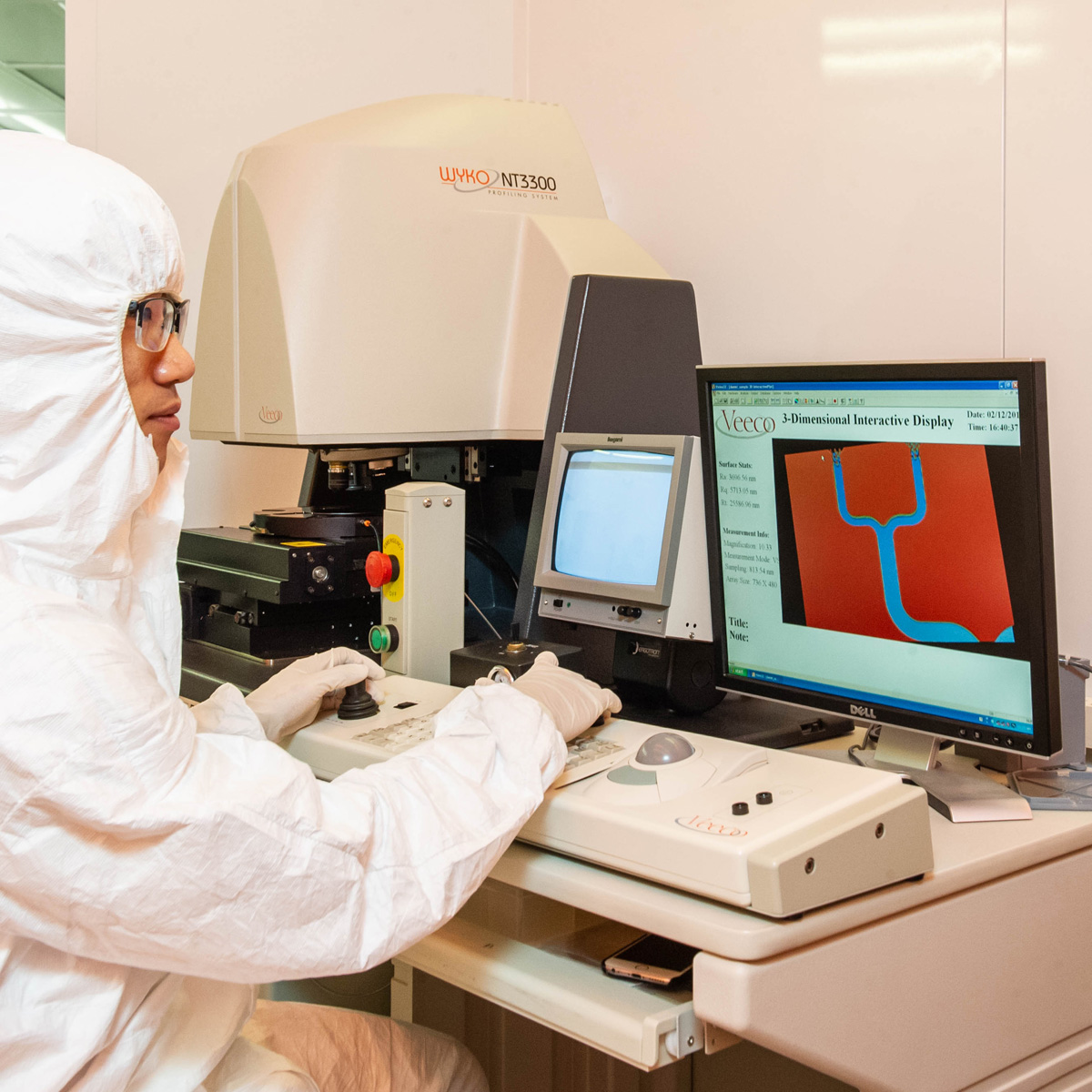Optical (non-contact) Profilometer

WYKO NT3300 Optical Profilometer
The Optical Profiler investigates variations in topography for surfaces ranging from very smooth to 2mm step height. Basic interferometric principles are used with light reflected from a reference mirror combined with light reflected from a sample to produce interference fringes, where the best-contrast fringe occurs at best focus.
Two modes of interferometry are used: PSI (Phase Shifting Interferometry) mode uses variations in phase of a monochromatic (632 nm) reference source to combine with beam reflected from the sample to form interference rings. The variation in intensity of the rings at significant phases is used to calculate small height variations on the sample surface. VSI (Vertical Scanning Interferometry) mode uses short coherence length of white light to measure the resulting degree of fringe modulation, or coherence, between the reference and sample beams as the interferometric objective moves vertically through sample focus. The vertical position of the optics at peak fringe contrast is extracted for each point on the sample surface, resulting in a topographical map.
| Range | Vertical Resolution | |
|---|---|---|
| PSI | up to 150 nm | 3 Ǻ |
| VSI | up to 2mm | 3 nm |
Wyco Operation Procedures (PDF)
For training or questions, please contact Sergi Lendinez